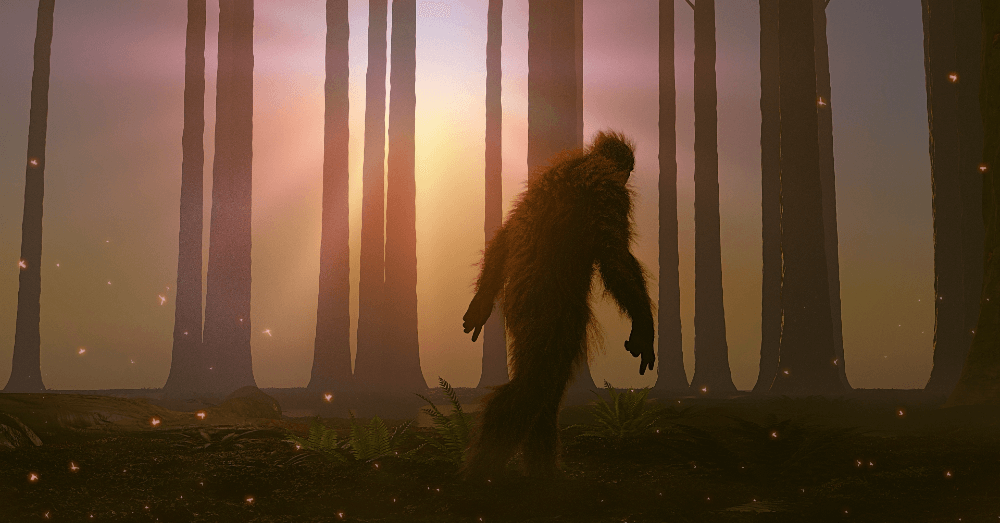The legend of the Sasquatch has been around for centuries. Stories of a man-like creature wandering around in the forest, sneaking up on people, are widespread.
No other campfire tale is quite as popular as that of a bigfoot creature wandering around in the forests and trees across America. The earliest references of such a creative come from native American tribes who told stories of a creature called “Sasq Ets” or “Hairy Giant” roaming around in the woods. This creature was believed to live in the mountains and forests, and has been rarely seen, but can be heard rustling in the trees.
When did the legend become mainstream?
Leave it to cinema to feed an urban legend and bring more life to it. In 1958, the movie The Colossus of America was released. This film featured a giant ape-like creature roaming the forested area of Washington State. This brought the legend to life with increased reports of sightings and encounters with similar creatures across the country. Since this time, books, movies, and shows have been dedicated to the legend, and Bigfoot has become one of the most popular urban legends in America, and one that hasn’t been definitively disproved.
How big is the Sasquatch?
The legend of the Sasquatch has some consistencies to it. In no version of this legend is the creature so large that it cannot hide in the forest among the trees. The creature is described as standing between 7 and 10 feet tall and weighs in at more than 490 pounds. The Bigfoot part of the story has to do with footprints that have been found in many areas that measure as much as 17 inches long.
Europe has their own version
The Bigfoot legend is widespread in Europe and America. In fact, the stories are widespread enough, with sightings reported that have been taken seriously by some countries. The stories have become so believable that Bigfoot has been put on the endangered species list. This occurred in Russia in 1965, with Germany and France following suit in 1967.
The only evidence of the Bigfoot creature
It’s common for people to tell stories to simply get attention. David Thompson is a well-known British explorer who is often credited with the first discovery of a set of footprints that led to the legend of the Sasquatch. These footprints were discovered in 1811 and could have belonged to a large man-ape creature, but they could also have been nothing more than a hoax. To date, nobody has produced any hard evidence of such a creature’s existence.
Don’t cry around Bigfoot
Part of the legend of this incredible woodland creature is its tendency to punch people in the face. According to this legend, if you’re confronted by Bigfoot, you need to offer some food. Doing so will ensure you at least an 80% chance of survival. On the other hand, crying will provoke the animal to punch you in the face.
What is Bigfoot?
Science has dedicated some efforts to explore the legend of the Sasquatch and figure out what this creature might be. Because no hard evidence has every been provided, and no corpse has ever been found to study, this is difficult.
Some researchers think the Bigfoot could be related to a giant ape, while others believe it to be a man-like creature. Others think it could be an extraterrestrial being, which would be another legend in itself.
What does the Sasquatch eat?
Some people believe this large creature is a carnivore, but no evidence has ever been found. Others feel it is a vegetarian, but some people have said that Bigfoot has a sweet tooth and loves to eat Kit Kats (who doesn’t), but none of these reports have ever bene proved or confirmed.
Bigfoot is fast
The legendary large size and massive feet of this creature are said to allow Bigfoot to run at speeds of up to 35 mph. If the legend of the Sasquatch is true, this means it would be the fastest two-legged creature in the world and would leave the fastest human runners in the dust.
A protective legend
Early Native American tribes saw Bigfoot differently than most modern Americans. They believed this creature to be a spiritual being and the protector of the woods. Some tribes depicted the Sasquatch on totem poles.
The legend of the Sasquatch continues to be one that brings wonder, intrigue, and imagination to anyone willing to explore the woods. Is it still just an urban legend shared around campfires, or is there really a tall, hairy, man-like creature that wanders the woods alone, evading discovery?

